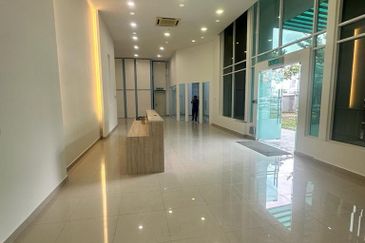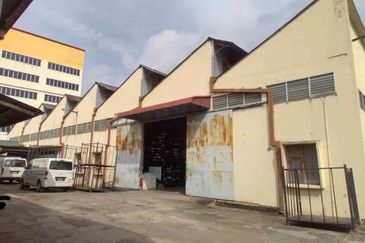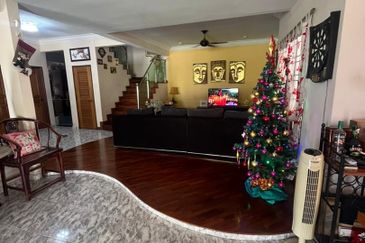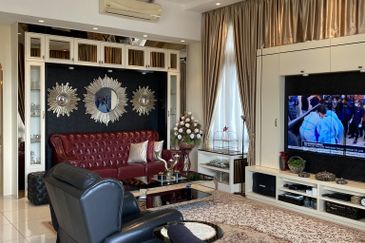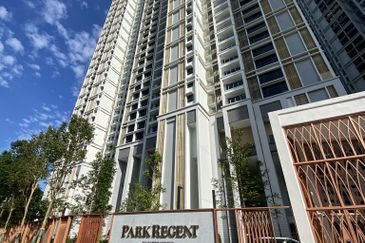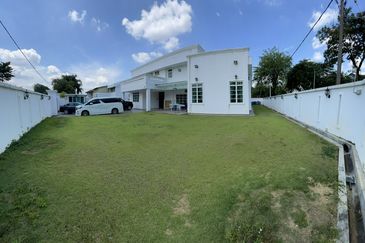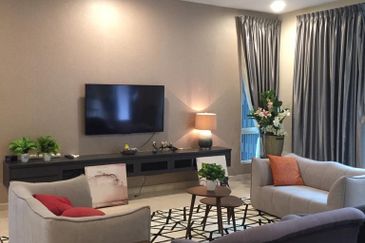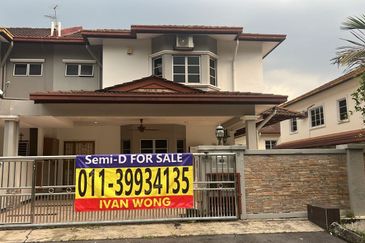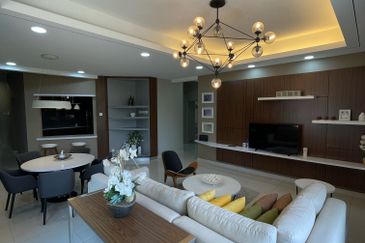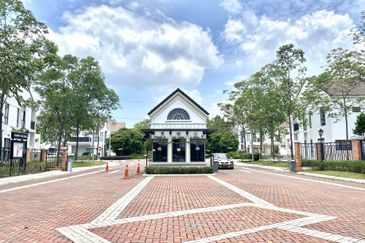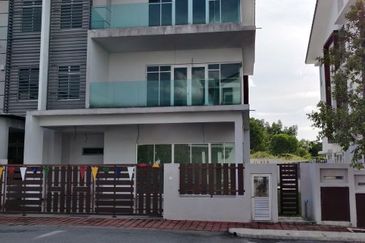 Once upon a time a backwater, Hong Kong’s famed Lan Kwai Fong (LKF) — derived from the names of flowers — is now the city’s most famous watering hole.
Once upon a time a backwater, Hong Kong’s famed Lan Kwai Fong (LKF) — derived from the names of flowers — is now the city’s most famous watering hole.
At its best, this is the place to be merry and savour Hong Kong’s trendy nightlife till the wee hours, but at its worst, a seasoned British journalist gives his perspective: “LKF is a preservative for ageing Westerners who refuse to grow up. During the Rugby Sevens, look at the gobsmacked faces of locals as they scurry quickly by the area. It is a look of bewilderment and horror.” As he speaks, a shiny silver, open-top Mercedes-Benz sports car pulls up in front of the bar where we are sitting, and two ladies dressed in little pieces of fabric jump out of the car.
Behind any bold venture, there is usually a genius. For LKF, there was Allan Zeman, the chairman and founder of Lan Kwai Fong Holdings Ltd, who is popularly known as the godfather of LKF.
A German-born Jew who grew up in Canada, Zeman lost his father when he was eight years old. He started working in odd jobs at 10 and later, dropped out of college.
He went on, however, to make millions in the clothing import business and moved to Hong Kong to be closer to China where he sourced clothes for export. In the early years, one problem he faced was that there was no proper Western restaurant to take his guests to. Hong Kong was becoming more cosmopolitan but there were limited bars and restaurants that catered to expatriates. Wanchai, the most prominent nightlife area then, was becoming a little seedy.
At that time, LKF was occupied by flower shops and textile factories. It was not living up to its real estate potential, given its location a hop and skip away from Hong Kong Island’s central business district. So, in the early 1980s, Zeman took a chance and started California Restaurant at the corner of D’Aguilar Street in the LKF area. The gods of fortune smiled on him and California did roaring business.
This prompted Zeman to raise HK$32 million to acquire and refurbish more properties in LKF. He tore down some buildings and in place, built taller buildings to enhance yield, while other buildings were given a facelift. Restaurants were located in the basement with open windows to maximise use of space. Upper floors housed fitness studios, fashion boutiques, offices, and serviced apartments.
Given Zeman’s Midas touch, Tung Chee Hwa, then the chief executive of Hong Kong, asked him to turn around the ailing Ocean Park in 2004, and give Disneyland Hong Kong a run for its money (which is how he earned his nickname as Hong Kong’s Mouse Killer).
While Zeman is often spotted at LKF at nights, the entertainment property developer is a teetotaller. In an email interview with City & Country, he says, “I only drink on very rare occasions, such as toasts at special celebrations. I’ve been in the business for so long that I can have fun without drinking!”
Location atmosphere
LKF occupies three blocks of buildings that range from 10 to 16 floors, stretches for 1.5 km and offers approximately 500,000 sq ft of space. Zeman owns about 68% of the space in LKF, including nine restaurants and bars — California Restaurant, Lux, C bar, The Whiskey Priest, 2121 Bar, Indochine 1929, Thai Lemongrass, Kyoto Joe, and Tokio Joe. Other F&B groups with outlets in LKF are Igor’s and Ninety Seven. LKF is big but yet not too big, with a sufficient concentration of over 100 bars, restaurants, clubs and shops.
Being the first expatriate watering hole has been its biggest selling point. Touted as a must-go destination for tourists and working professionals, LKF is only a short walk up the hill along D’Aguilar Street, off Queen’s Road Central area, where major multinational companies and banks are located. An important point is that it is within walking distance and on the way to Mid-Levels, the most popular residential area for expatriates and upper-income professionals.
While the restaurants are about 3,500 sq ft in size, the bars are designed to be tiny, which means limited standing space inside. The crowd has to spill out onto the pavement, thus adding to the lively atmosphere. Zeman believes that patrons come to LKF because they are attracted to the area’s uplifting, casual yet hip atmosphere. The colourful neon lighting and noise cheer people up and distract them from daily worries, he says. Adds my British journalist friend, “It is one place where it is possible to spend, literally, any amount of money between the hours of midnight and three in the morning…when drunk, of course.”
Joe Lin, senior director of retail services at CB Richard Ellis (CBRE) Hong Kong, says LKF is a great place for social gatherings and getting to know people. It is a favourite hangout for the upper class, celebrities and models. A Malaysian who works at Morgan Stanley Hong Kong hangs out at Fong or Lux once a week, and recommends C bar for people watching.
Many locations have tried to copy LKF but it has somehow managed to maintain its pole position. In other places, there are restaurants scattered to form a themed F&B area, for example, Soho East in Lei King Wan, Soho in Central, Star Street in Wanchai, Taikoo Place area in Quarry Bay, Knutsford Terrace in Tsim Sha Tsui, and Queens’ Road East Hopewell Centre area. LKF is a relatively safe area and its outlets have better ambience and the longest operating hours, Lin explains.
People are always going to want choices, and we have plenty of that in Hong Kong, Zeman says.
A Singaporean investment banker who lives in Mid-Levels usually dines in Soho as he thinks the area has better restaurants but he and his regular drinking companions prefer happy hours at LKF due to its atmosphere.
Zeman does not believe in imposing strict tenant mix guidelines because he wants to encourage creativity. He has allowed a mix of F&B tenants that range from premium restaurants with long waiting lists to outlets that offer quick, cheap and tasty meals. Some bars offer good deals on beers, others have specialist cocktails, while there are also clubs with exclusive entrance policies. LKF has something for everyone — from Chinese, Thai, Japanese, Vietnamese to Italian and upmarket French restaurants, as well as cheap and cheerful restaurants in “Rat Alley” that serve Indian and Malaysian food.
What’s more, alcohol has become cheaper in Hong Kong. Last year, when the government removed taxes on beer and wine, Lan Kwai Fong Entertainments, a subsidiary of Lan Kwai Fong Holdings, reduced its alcohol menu prices by 4% to 20%. During happy hours, a pint of beer costs about HK$50 (RM22), or about about 50% cheaper. To attract patrons, happy hours may start from 5pm and extend to 10pm.
Word-of-mouth marketing
By far the most effective promotion has been through word-of-mouth. People will bring their friends from out of town, or have their birthday, stag or hen nights, and even team building events at LKF, Zeman says. Thanks to travel websites, blogs and social media sites like Facebook, photos of the LKF street sign and videos of lively parties at LKF have reached people across the world, adding to the allure of the place. There are about 30 groups or fan pages on Facebook created by patrons and party organisers, which is an impressive number. In contrast, a search on facebook for a well-known row of bars and clubs in Kuala Lumpur yielded less than 20 results, mainly pages created by individual outlets.
At the heart of it, Zeman says LKF is about people having fun and keeping them interested. And there must be something going on that keep them entertained and surprised each time they visit. For one, there are the seasonal festivals such as the LKF Street Carnival, Beer Festival, Halloween, Valentine’s Day, Christmas, New Year’s Day countdown, and also Canada Day, where LKF will put up decorations and provide free entertainment. Booths are also set up in front of bars and restaurants for people to sample what each outlet has to offer.
When it comes to marketing, the whole is greater than the sum of its parts. An LKF Association — of which Zeman is the president — was set up as a platform for outlets to work as a community, and to raise funds for events through sponsorship and advertising. By working together, there is a more compelling story to sell to sponsors, and fixed advertising costs can be shared. Says Zeman , “No other area in Hong Kong has the same community feeling as LKF, where all the venues work together through the association to continuously improve the district.”
Rents have not dropped at LKF
According to CBRE’s Lin, after the financial meltdown, the F&B sector in Hong Kong experienced a drop in sales except for fastfood and the mass-market type restaurants. But he believes the situation has improved in the last two months due to the feel-good factor from the stock market rally. Zeman says there was a 5% to 10% decline in F&B customers during the worst of the crisis, but adds that business has picked up lately.
The rent of a ground-floor restaurant is HK$180 to HK$250 psf while upper floor restaurants fetch HK$30 to HK$50 psf, Lin estimates. Rents in the past 12 months have been relatively stable and increases are not expected due to external challenges, including a smaller expatriate community and high unemployment. The eternal optimist, Zeman maintains a positive view. He says, “Rents have not really dropped in the past year since business has not been too heavily affected. With the light at the end of the tunnel getting brighter and brighter, I foresee continued strong sales and rents into 2010.”
LKF going places
Zeman’s children, Marisa and Jonathan, help him run the business although he is far from retired. Jonathan is chief operating officer of the LKF group while Marisa is a director of Lan Kwai Fong Entertainments. Zeman believes it is not just about keeping the business within the family. The new managers, he says, must have the right mentality and creativity for the continued success of LKF. “My son and daughter definitely have that in them, both genetically and from growing up in LKF.”
Zeman has declined numerous invitations by various cities to help them create an LKF. It requires many special elements to make it work, he says. He finally agreed to work on a project in Chengdu, which will open at the beginning of 2010. It will be like LKF with more shops and full day entertainment.
On whether there are plans to list Lan Kwai Fong Holdings or cash out, Zeman says, “LKF is really where I began in Hong Kong all those years ago. It’s something special I created and it will always be special to me. Besides, it would be impossible to put a price on it!”
This article appeared in City & Country, the property pullout of The Edge Malaysia, Issue 772, Sep 14-20, 2009.
TOP PICKS BY EDGEPROP
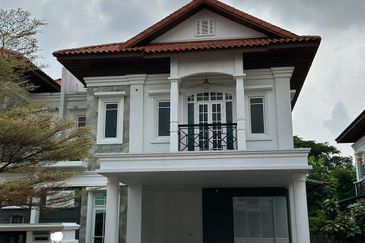
Eastern Heritage, Setia Eco Glades
Cyberjaya, Selangor
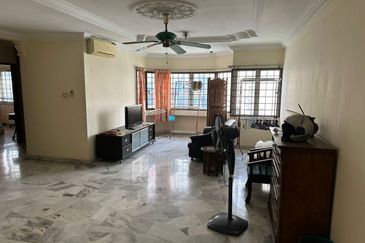
De Tropicana Condominium
Kuchai Lama, Kuala Lumpur
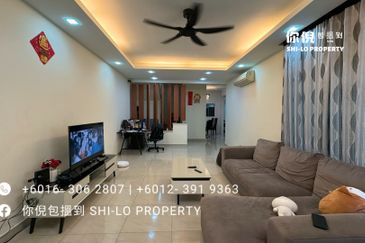
Jalan Makyong, Bandar Bukit Raja
Klang, Selangor

Glory Beach Resort Apartment
Port Dickson, Negeri Sembilan

Pearl Villa Townhouse
Bandar Saujana Putra, Selangor
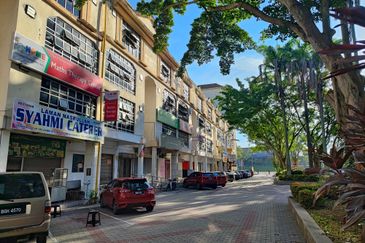
Nilai Square Commercial Center
Nilai, Negeri Sembilan

